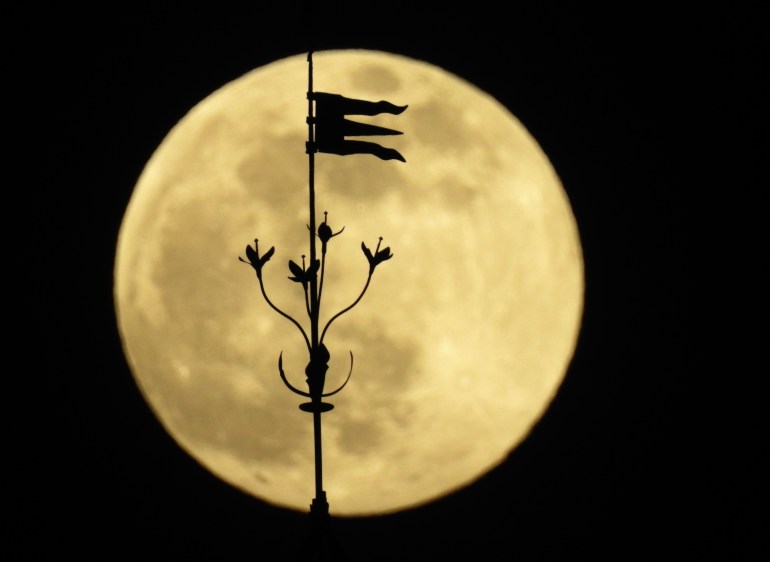There are usually three to four supermoons in a year; Al Jazeera explains the phenomenon.
A supermoon is an astronomical phenomenon where a full moon looks larger and brighter than usual. It happens when the full moon occurs at the same time that its orbit is closest to the Earth.
In a rare occurrence, there will be two supermoons in August – the first of which will emerge on August 1.
Supermoons can appear to be up to eight percent larger than a regular moon.
Understanding the moon cycle
There are eight phases of the moon cycle, which repeats every 29.5 days.
The phases are: new moon, waxing crescent, first quarter, waxing gibbous, full moon, waning gibbous, third quarter and waning crescent.

The moon reflects the sun’s light and when sunlight is reflecting off the far side of the moon it is referred to as a new moon.
When sunlight reflects off the near side of the moon it is known as a full moon. In a year, there are usually three to four supermoons.
This year when the moon is close to Earth there will be four supermoons in a row, according to EarthSky, a science news website:
- July 2-3: 361,934km (224,895 miles) away
- August 1: 357,530km (222,158 miles) away
- August 30-31: 357,344km (222,043 miles) away
- September 28-29: 361,552km (224,658 miles) away
The supermoon at the end of August will be the closest of the year and is also a blue moon – the second full moon in a calendar month.
What causes a supermoon?
The term “supermoon” was coined in 1979 by astrologer Richard Nolle to refer to the point when the full moon is at the closest point of its orbit around the Earth.
The moon’s orbit is elliptical as it follows an oval course around the Earth, meaning that it is closer and farther away from the Earth at different times.
The supermoon on August 1 will be about 357,530km from the Earth.

Throughout its orbit, the moon’s distance from our planet varies between about 360,000km and 400,000km, according to NASA.
An apogee refers to the farthest point in the moon’s orbit around the Earth, which on average is about 405,500km (252,000 miles) from the Earth.
A perigee refers to the closest point in the moon’s ellipse, which on average is about 363,300km (225,740 miles) from the Earth.
A perigee supermoon can appear 14 percent larger and 30 percent brighter than a micromoon, which occurs when the full moon coincides with apogee.
A supermoon appears brighter because as it is closer, more of the sun’s light reflects off the moon’s surface and makes it to Earth.

What are the effects of a supermoon?
During new moons and full moons, the sun, Earth and moon align, making the gravitational pull on the Earth’s oceans strongest. This phenomenon is often referred to as the spring tide.
According to NASA, high and low tides will be more pronounced with a supermoon and especially so if there is an extreme perigean full moon, like the one that occurred in November 2016, which was 356,000km away.

Sumber: www.aljazeera.com
 Skip to content
Skip to content

